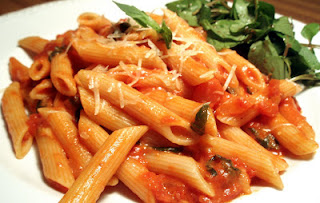Preparing a good meal typically means following a recipe, whether it’s from a cookbook or from memory. Sauces are an important step in cooking almost any meal. There are sauces for all different types of foods. The sauces main purpose is to enhance the dish it’s served with as it brings out more flavor. There are different bases for sauces, as some are wine based, stock, or cooked with thyme and pepper as well as butter. There are a few basic sauces many of us know and love:
- White sauces, usually served with pasta, contains milks and creams. There are white butter sauces, based in butter, vinegar, and shallots.
- Brown sauces are based on dark stocks like lamb and beef dishes.
- Vegetable sauces are from cooked or purèed vegetables.
- Vinaigrettes are usually served on salads, made up of oils, vinegars, and seasonings.
- Hollandaise is usually associated with eggs benedict, a common breakfast dish, and it is cooked with egg yolks and butter.
- Dessert sauces are typically made with fruits or chocolates and sugar. Their bases are usually from caramel, butterscotch, or nuts.
This list includes just some of the many sauces. You may hear chefs commonly refer to the Five Mother Sauces. One of them is the hollandaise sauce, but also included is bechamel, a white sauce made from milk and cream. Veloute is a white stock based sauce usually paired with a chicken dish but sometimes used with fish. Espagnole is a brown sauce traditionally with veal and beef. Of course, you cannot forget the common tomato sauce, made traditionally by reducing tomatoes over heat.
You must be able to pair the right sauces with the dishes. The most important element of any sauce is the ability to cling to the food and make the flavor pop. According to the Food52 Network, a roux, an emulsifier, and a reduction are the three techniques used to make any sauce thick and stable enough to smother whatever food it is poured on. A roux is just a fancy name for flour mixed with fat. When butter and flour are cooked with a liquid, the mixture thickens and becomes the reducer, becoming the base of the sauce.
There are so many great sauces out there. Some sauces have recipes you can follow along with or sauces you can make yourself by any spices you may want in your dish. Some sauces are rich and spicy and others are just tasty. If cooking is your hobby or you’re just beginning in the kitchen, knowing your sauces is a basic first step to making any meal.



